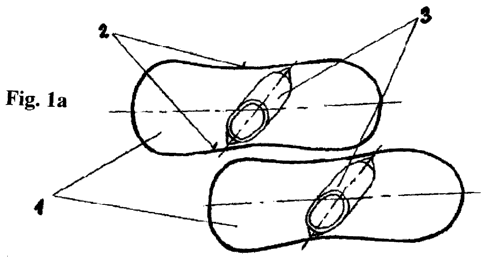Some of the information on this Web page has been provided by external sources. The Government of Canada is not responsible for the accuracy, reliability or currency of the information supplied by external sources. Users wishing to rely upon this information should consult directly with the source of the information. Content provided by external sources is not subject to official languages, privacy and accessibility requirements.
Any discrepancies in the text and image of the Claims and Abstract are due to differing posting times. Text of the Claims and Abstract are posted:
| (12) Patent Application: | (11) CA 2817399 |
|---|---|
| (54) English Title: | SPORT EQUIPMENT FOR SNOW RIDE |
| (54) French Title: | EQUIPEMENT SPORTIF POUR DESCENTE SUR NEIGE |
| Status: | Dead |
| (51) International Patent Classification (IPC): |
|
|---|---|
| (72) Inventors : |
|
| (73) Owners : |
|
| (71) Applicants : |
|
| (74) Agent: | NA |
| (74) Associate agent: | NA |
| (45) Issued: | |
| (86) PCT Filing Date: | 2010-04-13 |
| (87) Open to Public Inspection: | 2010-09-30 |
| Examination requested: | 2015-04-13 |
| Availability of licence: | N/A |
| (25) Language of filing: | English |
| Patent Cooperation Treaty (PCT): | Yes |
|---|---|
| (86) PCT Filing Number: | PCT/CZ2010/000045 |
| (87) International Publication Number: | WO2010/108461 |
| (85) National Entry: | 2013-05-09 |
| (30) Application Priority Data: | ||||||
|---|---|---|---|---|---|---|
|
The embodiment as presented on Fig. 1a consists of two identical and symmetrical boards 1. The sport equipment for ride on snow comprises two boards (1) for simultaneous use, the boards (1) have lateral cut (2) and are at least on one side flexed upwards, each board (1) contains binding (3) for shoe and the longitudinal axis of the board (1) is horizontally asymmetrical to the longitudinal axis of the binding (3).
Le mode de réalisation présenté à la figure 1a est composé de deux planches identiques et symétriques (1). L'équipement sportif pour descente sur neige comprend deux planches (1) destinées à une utilisation simultanée, les planches (1) présentant une coupe latérale (2) et étant, au moins sur un côté, fléchies vers le haut. Chaque planche (1) comprend une fixation (3) pour la chaussure, et l'axe longitudinal de la planche (1) est horizontalement asymétrique par rapport à l'axe longitudinal de la fixation (3).
Note: Claims are shown in the official language in which they were submitted.
Note: Descriptions are shown in the official language in which they were submitted.

For a clearer understanding of the status of the application/patent presented on this page, the site Disclaimer , as well as the definitions for Patent , Administrative Status , Maintenance Fee and Payment History should be consulted.
| Title | Date |
|---|---|
| Forecasted Issue Date | Unavailable |
| (86) PCT Filing Date | 2010-04-13 |
| (87) PCT Publication Date | 2010-09-30 |
| (85) National Entry | 2013-05-09 |
| Examination Requested | 2015-04-13 |
| Dead Application | 2017-04-13 |
| Abandonment Date | Reason | Reinstatement Date |
|---|---|---|
| 2016-04-13 | FAILURE TO PAY APPLICATION MAINTENANCE FEE |
| Fee Type | Anniversary Year | Due Date | Amount Paid | Paid Date |
|---|---|---|---|---|
| Reinstatement of rights | $200.00 | 2013-05-09 | ||
| Application Fee | $400.00 | 2013-05-09 | ||
| Maintenance Fee - Application - New Act | 2 | 2012-04-13 | $100.00 | 2013-05-09 |
| Maintenance Fee - Application - New Act | 3 | 2013-04-15 | $100.00 | 2013-05-09 |
| Maintenance Fee - Application - New Act | 4 | 2014-04-14 | $100.00 | 2014-04-14 |
| Request for Examination | $800.00 | 2015-04-13 | ||
| Maintenance Fee - Application - New Act | 5 | 2015-04-13 | $200.00 | 2015-04-13 |
Note: Records showing the ownership history in alphabetical order.
| Current Owners on Record |
|---|
| STORKAN, PAVEL |
| Past Owners on Record |
|---|
| None |